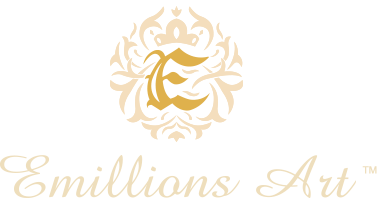In order for an artist to sustain creative output and maximize artistic flow, there must be a continual letting go of the work. Otherwise, the work becomes the very thing that stops new work. Let’s explore the idea together!
Truly great artists aren’t captives of their own ideas.
What does this mean?

Playground of Opportunity, Joan Sonnenberg
Well, simply put, it means an artist cannot afford to be caught managing the aftermath of the creative process. As artists, the job is to observe, contemplate, distill and the execute. But now, more than ever, there is an alluring trap which calls the artist to watch as their work enters the world — to see the joy or pain in the beholders’ eyes. It follows that they mustthen post, promote, explain, talk up and peddle their masterpiece.
All the while, no new art is being made.
When more time and energy is spent managing the success of the most recent idea, the next idea has less room to incubate. But sustainability comes from learning how to work the rhythms of the process and avoid the distractions that interrupt the cycle of starting again.
This is the power of recurrence.
Recurrence is the fuel for continued growth and innovation. If the work itself becomes precious, the recurring momentum of art ideation begins to slow. This is when the artist hits a “slump”.
The trick to getting out of a slump, or avoiding it all together, is never to judge the premise of an idea before it is fleshed out. Let small ideas be what they are. Not every act needs to be gargantuan. Or, if it’s huge, let it be huge.
Ideas are a spark to be gently fed — fueled by the curiosity of what could be. When the artist’s focus and attention are diverted to tinkering with the force and effect of finished works, that baby spark is deprived of the attention needed to grow into something beautiful.
It’s important to remember, the outcome is not the ultimate problem to solve. The REAL work is whether the artist will begin again — every minute, every hour, every day, every week. Pick up the brush, mix the clay, stretch a new canvas, load another roll of film. Just begin.
Recurrence is a result, but also a practice. It’s the insurance policy against the work becoming so precious it becomes distracting. What a paradox!
There is a poignant lesson in this principal for all of us — even those of us not immediately identifying as artistic. We can find traces of recurrence in our jobs, our family life and hobbies. It’s a kind of “natural law”. When we break down art and the process of the artist, we find there is so much to learn not just from the works themselves, but also from the process of how they came to be.
What has art and the act of creating taught you? Let us know in the comments!






Indeed, this is an artist’s Holy Grail – artists make the work and others sell it. My very first representation was with an elegant 57th Street Gallery in NYC that exhibited Leonora Carrington, Rufino Tamayo, and other Latin American masters. I was really on my way! However, Brewster Arts has been gone for nineteen years. For decades I have known that being an artist means I have two demanding jobs: making art and marketing it. Unfortunately, the problem is worse as complex economic factors are causing the demise of mid-level galleries. And this at a time when more artists are vying for attention than ever. I plan never to stop making art – I keep getting better! – but I worry for artists who come after me. How will they manage?
Barbara. All the artists after you will acclimate just as you have and will continue to do for as long as you desire. Sincerely, M